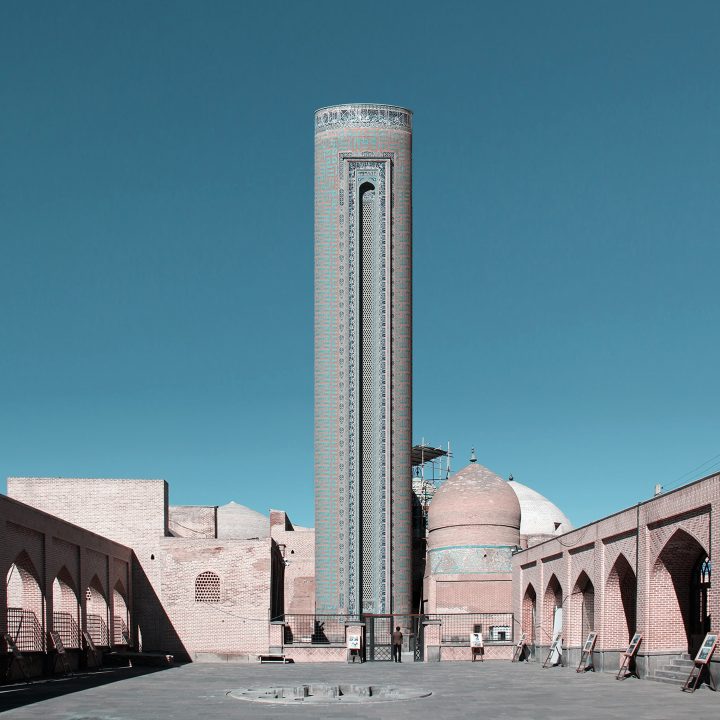hyperallergic – Artist Mohammad Hassan Forouzanfar plants skyscrapers in the country’s ancient cities and villages in a surreal and spectacular new project.
Hakim BisharaJuly 24, 2019

From the royal palaces of Persepolis to the glorious mosques of Isfahan, Iran’s ancient architecture has given the world some of its most spectacular structures. Today, however, we reserve our awe to stratospheric skyscrapers as countries compete for the tallest building. In his project Retrofuturism, Iranian artist Mohammad Hassan Forouzanfar wishes to combine the best of two worlds by introducing skyscrapers into historical Iranian villages and cities.
Futuristic as they appear, Forouzanfar’s conceptual skyscrapers blend organically with their environment in surreal harmony. Forouzanfar does that by presenting earthen Iranian cities and villages with the vertical conventions of modern skyscrapers while preserving the features of classic Persian architecture.

“The past architecture of Iran, due to the lack of beam and column technology, has always been a horizontal development and has not had high-rise buildings,” Forouzanfar wrote Hyperallergic in an email. “The architecture of villages and cities in historical textures has organic continuity and is in contradiction with the method of development in modern architecture.”

Forouzanfar, a 26-year-old artist based in Qum, Iran, has studied architecture at the Qum University before completing a second degree in graphic design. He currently heads the design studio Archi_graph, which offers the public courses in design and architecture. Retrofuturism was first featured in the design magazine Designboom, as part of the magazine’s “DIY submissions” feature. In an earlier project, Forouzanfar reimagined famous Iranian monuments into sprawling structures.

Iran is a country scarce on skyscrapers. Its two tallest buildings are the 787-feet high Goldis Tower in Sadeghiyeh west of Tehran and the 531-feet high Tehran International Tower in the capital city. By contrast, Iran’s neighboring countries on the other side of the Persian Gulf have fully adopted skyscrapers as part of their urban lives. The 2,722-foot high Burj Khalifa in Dubai has been the tallest building in the world since its completion in 2009.

Forouzanfar sets his skyscrapers in some of Iran’s most ancient desert cities. One of them is the historic city of Yazd, which was recognized as a UNESCO World Heritage Site in 2017. “The city escaped the modernization trends that destroyed many traditional earthen cities,” UNESCO’s description of Yazd City reads. “It survives today with its traditional districts, the qanat system, traditional houses, bazaars, hammams, water cisterns, mosques, synagogues, Zoroastrian temples and the historic garden of Dolat-Abad,” UNESCO adds.
Forouzanfar reimagines the historic city of Yazd in two renderings. In the first, he plants an impressive skyscraper near the historic Amir Chakhmagh complex, which includes a mosque, a bathhouse, cold water well, and a confectionery. In another, more ambitious rendering, a multitude of thin, tall towers sprout out of the city’s existing earth and dirt-made structures.



“[Retrofuturism‘s] concept is about discovering the potential of traditional Iranian architecture and its association with modern style,” Forouzanfar said. “It examines whether choosing a horizontal architecture was a good thing or not.” But when asked if he thinks his renderings would ever be realized in reality, the artist answered with “absolutely not!”
 Shabtabnews In this dark night, I have lost my way – Arise from a corner, oh you the star of guidance.
Shabtabnews In this dark night, I have lost my way – Arise from a corner, oh you the star of guidance.


